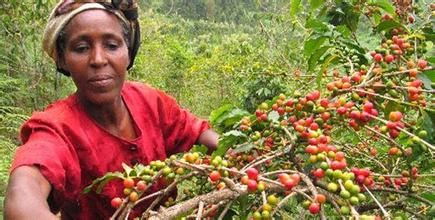Introduction to the manor in the planting area by the method of internal structure diagram treatment of coffee beans
Introduction to the manor in the planting area by the method of internal structure diagram treatment of coffee beans
The beans selected at random may be typical of Kenna, and further, it may be the traditional Bourbon variety or Mundo Novo. As you can see, I am not waiting for a sample (there is no reason to do so). Instead, we select the stage to extract the sample which shows obvious visual difference. For large and medium-sized drum roasters, it takes a long time to transfer heat. So there was no significant difference in the first few minutes. At the same time, once again, I do not pursue the best baking effect in this batch of baking, but just bake it brown for shooting. At this time, the coffee beans began to appear brown. Marbling appears on the surface, but it still does not expand. You can smell the slightly damp smell of roasted wheat. Some varieties of colors will appear brighter at this stage. Such as Costa Rica and Mexico.
5 light brown stage 8:00-370F [188C]
When an explosion is in progress, the surface color of the coffee still appears mottled and uneven. The burst of the bean body leads to the expansion of the coffee bean, the steam escapes from the inside of the bean, and the midline is fully opened, so that the remaining silver skin falls off completely. Because an explosion is an exothermic reaction, it will cause the beans to cool down. But it soon turns into an endothermic reaction, which means that if the roaster fails to supply heat in time, baking will stagnate at this point. This is not a good thing, once the caramel reaction begins (340 degrees Fahrenheit), the loss of temperature will produce a bitter "roasting" taste, which may be caused by the interruption of the long-chain polymerization. The melting point of sucrose is 370 degrees Fahrenheit, which is exactly the same as the coking reaction temperature indicated here.
Coffee is grown with seeds with endocarp, and the raw coffee beans we usually come into contact with have their endocarp removed, so they can't be planted.
Endocarp ("sheepskin" or "paper skin") refers to the tea-brown hard skin that wraps the coffee seeds, and the coffee beans attached to that layer are called "shelled beans" ("sheepskin paper beans").
Generally speaking, there are two pairs of seeds in the fruit, but occasionally there is only one seed in the fruit, which is called Pea berry.
The coffee we usually drink is made by grinding, brewing and other steps after roasting the seeds at the center of the coffee fruit.
Coffee fruit is mainly transformed into raw coffee beans by the following three treatments: dried, washed and semi-washed.

Important Notice :
前街咖啡 FrontStreet Coffee has moved to new addredd:
FrontStreet Coffee Address: 315,Donghua East Road,GuangZhou
Tel:020 38364473
- Prev

Introduction to the method of flavor description and taste treatment of coffee bean Yega Xuefei manor
The flavor description and taste treatment method of coffee bean Yega Chuefei Manor introduces the oldest sun treatment method of Yejia snow caffeine, but in 1972, Ethiopia introduced the water washing technology of Central and South America in order to improve its quality. it makes the jasmine and citrus aroma of Yega Snow more clear and refined, and it has become one of the best beans in the world, thanks to the exquisite washing technology after the 1970s.
- Next

Thickness and time setting of double-gear coffee bean grinder-which brand of coffee bean grinder is better
Double-gear coffee bean grinder thickness and time setting-coffee bean grinder which brand is good for grinding beans, the size of the powder depends on the way it is cooked. The shorter the cooking time, the finer the ground powder; the longer the cooking time, the thicker the ground powder. In the way it is actually cooked, it takes a very short time for the ESPRESSO machine to make coffee, so
Related
- Guji coffee producing area of Guji, Ethiopia: Humbela, Shakiso, Wulaga
- What is the most expensive variety of Qiloso in BOP multi-variety group?
- How to store the coffee beans bought home?
- Why are Yemeni coffee beans so rare now?
- Ethiopian Sidamo all Red Fruit Sun Sun Santa Vini Coffee beans
- SOE is mostly sour? What does it mean? Is it a single bean? what's the difference between it and Italian blending?
- Is Italian coffee beans suitable for making hand-brewed coffee?
- How to choose coffee beans when making cold coffee? What kind of coffee beans are suitable for making cold coffee?
- Just entered the pit to make coffee, what kind of coffee beans should be chosen?
- Can only Japan buy real Blue Mountain Coffee? What are authentic Jamaican Blue Mountain coffee beans?

